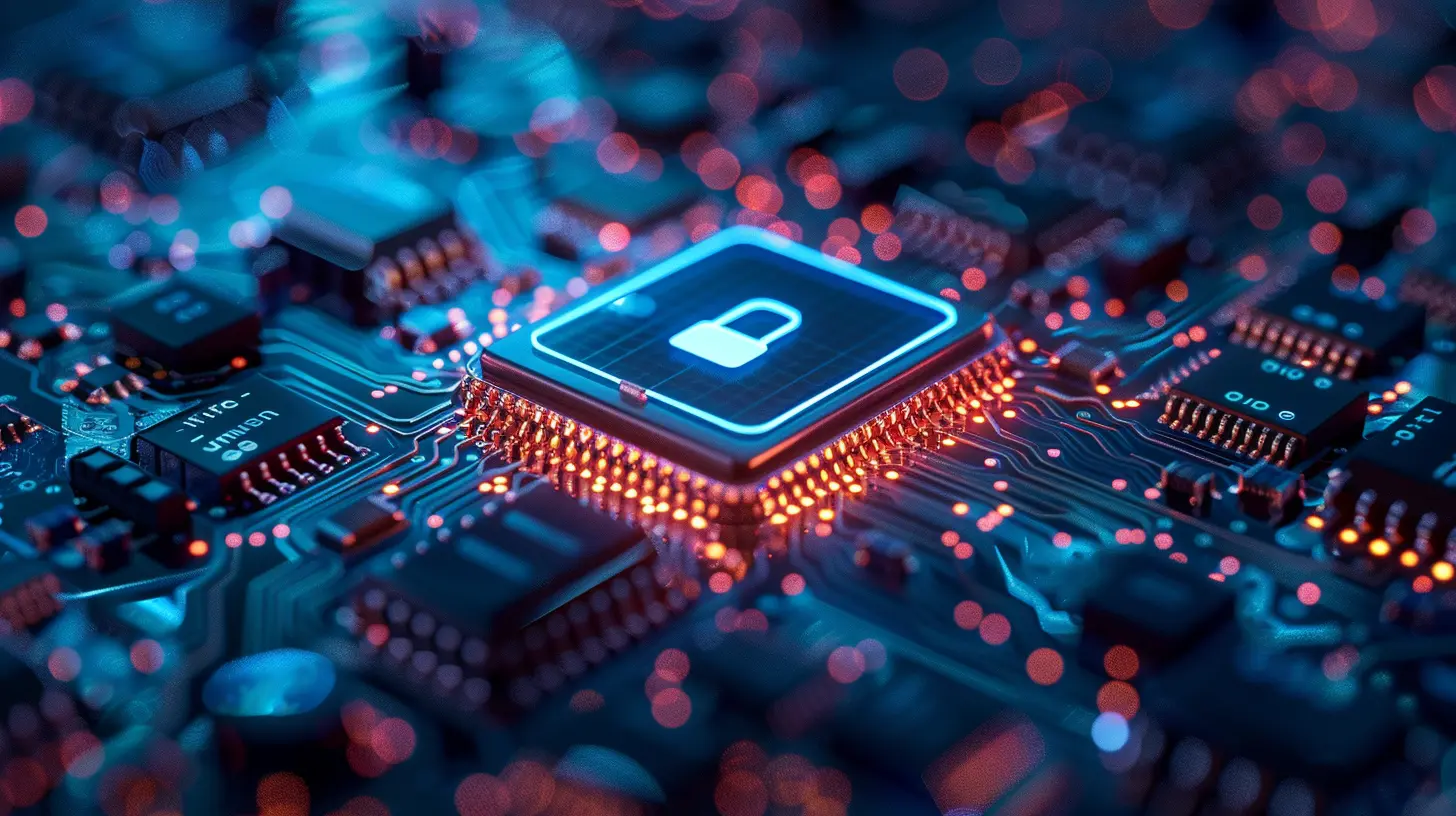Cybersecurity Threats in the Healthcare Industry: Protecting Patient Data
25 June 2025
In today’s fast-paced digital world, most industries have embraced technology to streamline processes, enhance productivity, and improve customer experience. One such field that has significantly benefited from technological advancements is healthcare. From electronic health records (EHRs) to telemedicine, technology has revolutionized how medical professionals deliver care.
However, with these advancements come new challenges—specifically, cybersecurity threats. The healthcare industry, being a treasure trove of sensitive information, has become a prime target for cybercriminals. In fact, healthcare data breaches are becoming increasingly common and more sophisticated, putting patient data at risk.
In this article, we'll dive deep into the cybersecurity threats the healthcare industry faces, explore why these threats are particularly dangerous, and discuss ways to protect patient data.

Why Is Healthcare a Target for Cybercriminals?
Let’s start with the "why." Why is the healthcare industry such a hot target for cybercriminals? Well, imagine having access to a database filled with sensitive information like names, addresses, Social Security numbers, medical histories, and even financial details. That’s what healthcare organizations store. These datasets are gold mines for hackers.Unlike credit card numbers, which can be canceled or changed, medical records are permanent. They can be used to commit identity theft, insurance fraud, and even blackmail. In short, healthcare data is extremely valuable on the black market. And with many healthcare organizations lacking robust cybersecurity measures, they become easy prey.

Types of Cybersecurity Threats in Healthcare
Now that we know why healthcare is a target, let's break down the main types of cyber threats that the industry faces. Whether it’s a hacker trying to steal information or a malicious insider leaking data, the threats are numerous and ever-evolving.1. Ransomware Attacks
Ransomware is like a digital hostage situation. Hackers infiltrate a healthcare system, encrypt sensitive data, and demand a ransom in exchange for the decryption key. Imagine a hospital suddenly losing access to its patients' medical histories, lab results, and scheduling systems. The stakes are incredibly high, and many organizations, unable to function without their data, end up paying the ransom.But here’s the kicker—paying the ransom doesn’t guarantee you’ll get your data back. Some hackers take the money and run, leaving the organization in a worse position than before.
2. Phishing Scams
We've all seen phishing emails—those sketchy-looking messages that try to get you to click on a link or download an attachment. In the healthcare industry, phishing scams can be particularly dangerous. A single employee clicking on a malicious link can expose the entire network to hackers. These scams often appear as legitimate communications from trusted sources, making them hard to detect.And here’s the scary part: once the hacker gains access, they can install malware, steal credentials, or even take over the entire system.
3. Insider Threats
Not all cybersecurity threats come from the outside. Sometimes, the threat is right under your nose. Insider threats occur when employees intentionally or accidentally compromise sensitive information. This could be a disgruntled employee leaking patient records, or it could be a doctor unknowingly using an insecure device to access patient data.Given the vast number of people who have access to medical records—from doctors to administrative staff—it’s easy to see how insider threats could slip through the cracks.
4. Distributed Denial-of-Service (DDoS) Attacks
A DDoS attack is like a digital traffic jam. Hackers flood a healthcare organization’s servers with so much traffic that legitimate users can’t access the system. These attacks don’t necessarily steal information, but they can bring an entire network to its knees, interrupting essential services like patient care, billing, and scheduling.In the healthcare industry, where time is often of the essence, even a minor disruption can have severe consequences.
5. Medical Device Vulnerabilities
Healthcare isn’t just about computers and servers. Medical devices like pacemakers, insulin pumps, and MRI machines are often connected to the internet, making them vulnerable to hacking. Imagine a cybercriminal gaining access to a patient’s pacemaker and altering its settings. It’s not just a data breach anymore—it’s a matter of life and death.Medical devices are often designed with functionality in mind, not security. This leaves them open to exploitation, and many healthcare organizations lack the resources to properly secure them.

The Impact of Cybersecurity Breaches in Healthcare
Okay, so we know the types of cyber threats that healthcare organizations face. But what happens when a breach occurs? The consequences can be devastating, not just for the organization but for patients as well.1. Compromised Patient Care
When a hospital or clinic is hit with a cyberattack, it can disrupt patient care. Imagine a doctor being unable to access a patient’s medical history during an emergency, or a lab unable to process test results. It’s not just an inconvenience—it can be life-threatening.2. Financial Losses
Cyberattacks can be incredibly costly. According to various studies, healthcare data breaches cost organizations millions of dollars. There are direct costs, like paying ransoms or fines, and indirect costs, like lost revenue and damaged reputations. Some organizations never fully recover from a significant breach.3. Legal and Regulatory Consequences
Healthcare organizations are legally required to protect patient data under laws like the Health Insurance Portability and Accountability Act (HIPAA). A breach can result in hefty fines and legal action. In some cases, patients may even sue the organization for failing to protect their sensitive information.4. Loss of Patient Trust
Trust is essential in healthcare. Patients need to feel confident that their personal information is safe. A data breach can erode that trust, causing patients to take their business elsewhere. And once trust is lost, it’s incredibly difficult to regain.
How to Protect Patient Data in the Healthcare Industry
So, how can healthcare organizations protect themselves and, more importantly, their patients from cybersecurity threats? While no system is foolproof, there are several best practices that can significantly reduce the risk of a breach.1. Invest in Robust Security Infrastructure
First things first: healthcare organizations need to invest in security infrastructure. This includes firewalls, antivirus software, encryption, and intrusion detection systems. The more layers of protection you have, the harder it will be for cybercriminals to break in.Think of it like a medieval castle. The more walls and moats you have, the harder it is for invaders to get through.
2. Regularly Update and Patch Systems
One of the biggest mistakes organizations make is failing to keep their systems up to date. Hackers often exploit vulnerabilities in outdated software. Regularly updating and patching systems can close these gaps and make it harder for cybercriminals to gain access.3. Employee Training and Awareness
Remember those phishing scams we talked about earlier? One of the best ways to prevent them is by educating employees. Regular cybersecurity training can help staff recognize phishing attempts, use secure passwords, and follow best practices for protecting sensitive data.Healthcare employees are often the first line of defense, so it’s essential that they understand how to spot potential threats.
4. Limit Access to Sensitive Information
Not every employee needs access to every medical record. Healthcare organizations should implement role-based access controls, ensuring that only authorized personnel can view sensitive information. This can reduce the risk of insider threats and limit the damage if a breach does occur.5. Use Encryption
Encryption is one of the best ways to protect data. When data is encrypted, even if a hacker gains access to it, they won’t be able to read it without the decryption key. Healthcare organizations should use encryption for both stored data and data in transit.6. Secure Medical Devices
Remember those vulnerable medical devices we mentioned? Healthcare organizations need to ensure that all connected devices are secure. This may involve working with manufacturers to implement security features or using network segmentation to isolate medical devices from other systems.7. Have an Incident Response Plan
No matter how strong your defenses are, there’s always a chance that a breach will occur. That’s why it’s crucial to have an incident response plan in place. This plan should outline the steps to take in the event of a breach, including how to contain the threat, notify affected parties, and recover data.Conclusion
Cybersecurity threats in the healthcare industry aren’t going away anytime soon. As technology continues to evolve, so too will the tactics used by cybercriminals. The key to protecting patient data is staying one step ahead. By investing in robust security infrastructure, educating employees, and implementing best practices, healthcare organizations can significantly reduce the risk of a breach.At the end of the day, protecting patient data isn’t just about compliance—it’s about safeguarding the trust that patients place in their healthcare providers. And in an industry where lives are literally on the line, that trust is invaluable.
all images in this post were generated using AI tools
Category:
CybersecurityAuthor:

Michael Robinson
Discussion
rate this article
2 comments
Serenity Garcia
Cybersecurity in healthcare is like a game of whack-a-mole—just when you think you've got one threat down, three more pop up! Let's hope our patient data stays as safe as grandma's secret cookie recipe!" 🍪🔒
September 26, 2025 at 4:47 AM

Michael Robinson
Absolutely, it's a constant battle! Just like grandma's recipe, protecting patient data requires vigilance and adaptability to stay ahead of emerging threats. 🍪🔒
Zarek McGuffey
Absolutely loved this article! It's so refreshing to see a focus on cybersecurity in healthcare. Protecting patient data is vital, and your insights on the latest threats and solutions are super helpful. Keep up the great work in raising awareness and promoting safety in the industry! Cheers! 🎉
July 9, 2025 at 3:24 AM

Michael Robinson
Thank you so much for your kind words! I'm glad you found the article helpful. Protecting patient data is indeed crucial, and I appreciate your support in raising awareness. Cheers! 🎉


